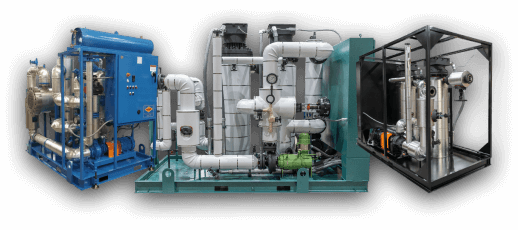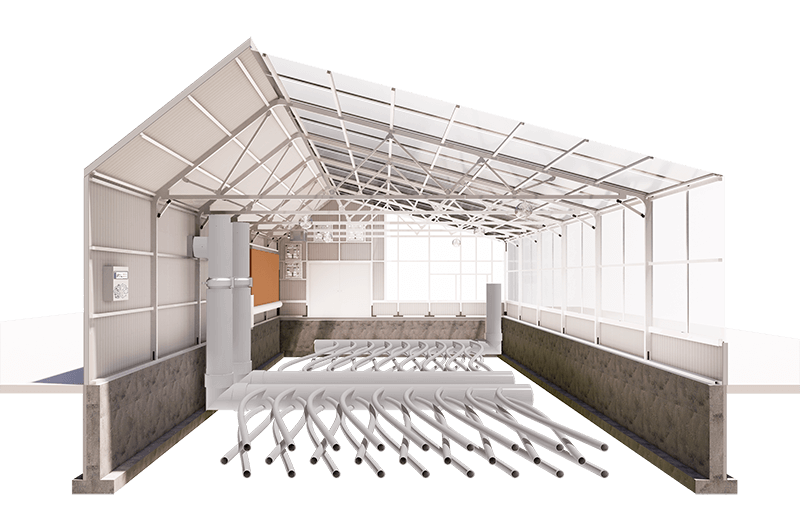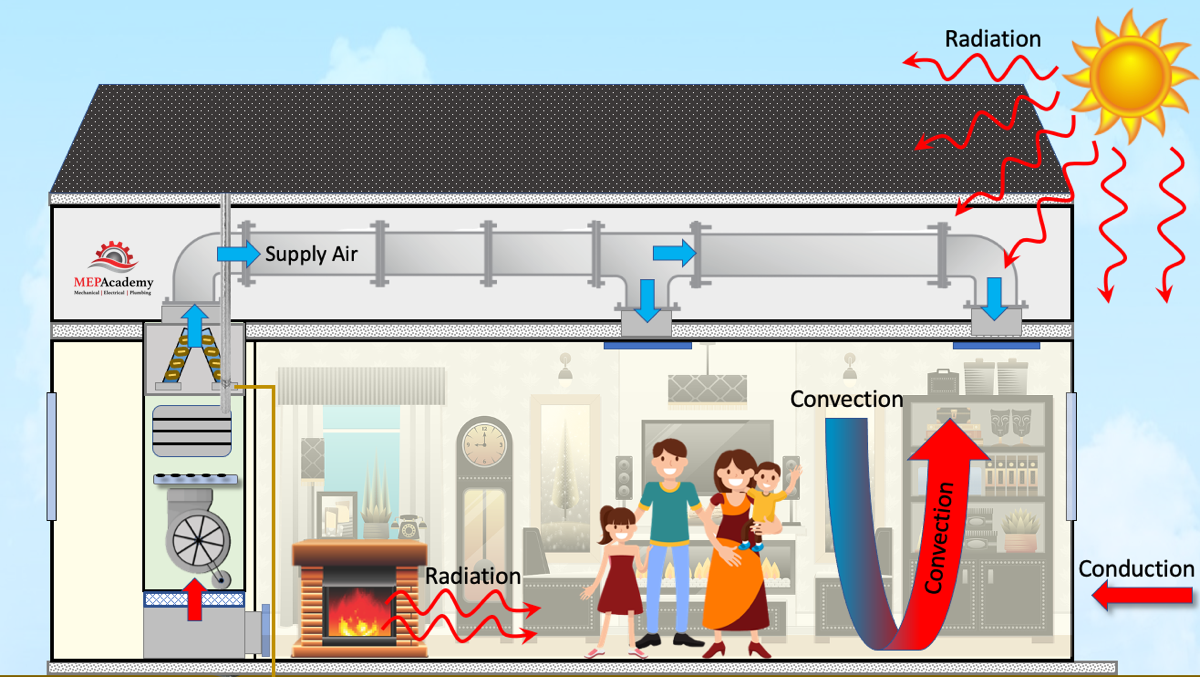Live Data Feedback: How DVS Heat Transfer Systems Enable Predictive Maintenance
The Function of Heat Transfer Systems in Sustainable Energy Solutions for the Future
Heat transfer systems are vital in the pursuit for lasting energy solutions. They maximize thermal power monitoring, boosting the effectiveness of sustainable innovations. By using devices like transmission, radiation, and convection, these systems reduce energy losses. Their function in solar thermal and geothermal applications is especially considerable. As advancements emerge, the potential for additional improvements elevates crucial questions about future energy strategies. What growths will form the landscape of lasting power?
Understanding Heat Transfer Systems

The Value of Thermal Power Administration
Efficient thermal power management is vital for optimizing energy performance and minimizing waste in various systems. By managing temperature level and maximizing Heat transfer procedures, companies can significantly minimize energy usage and operational prices. Effective management involves the application of sophisticated technologies and techniques that keep track of and regulate thermal problems within systems, ensuring that energy sources are made use of effectively. In addition, proper thermal energy management adds to decreasing greenhouse gas discharges, straightening with global sustainability goals. It also boosts system integrity and performance, resulting in boosted item quality and longer devices life expectancy. Inevitably, focusing on thermal energy monitoring is an essential step in the direction of creating much more lasting power services and cultivating an accountable strategy to power usage in domestic and industrial contexts.
Applications of Heat Transfer in Renewable Energy
While different renewable resource resources assure sustainability, the reliable application of Heat transfer plays a crucial duty in their effectiveness. In wind energy systems, Heat transfer is used for wind turbine part air conditioning, improving efficiency and long life. Geothermal power relies upon effective Heat exchange between the earth's subsurface and the liquid flowing in the system, taking full advantage of energy extraction. Biomass energy procedures likewise take advantage of Heat transfer, as it aids in converting natural materials into usable gas through pyrolysis and gasification. Furthermore, in hydropower, maintaining perfect temperatures in storage tanks can enhance energy outcome. Each of these applications demonstrates the essential importance of Heat transfer systems in improving eco-friendly energy modern technologies, inevitably adding to a much more lasting energy future.
Enhancing Solar Thermal Power Effectiveness
As solar thermal power systems continue to evolve, boosting their effectiveness has actually become crucial for maximizing power result. Advances in Heat transfer modern technologies, such as enhanced thermal storage products and cutting-edge Heat exchangers, play a considerable role in boosting efficiency. By making use of sophisticated materials that have premium thermal conductivity, systems can move and record Heat more properly. In addition, incorporating tracking systems that comply with the sunlight's course assurances that collection agencies receive suitable solar exposure throughout the day. Utilizing nanotechnology in solar absorbers can further raise energy absorption prices. Integrating computerized control systems aids take care of and control temperatures energy distribution effectively, leading to reduced losses and enhanced total system performance. These enhancements pave the method for even more sustainable solar thermal energy services in the future.
Geothermal Home Heating: A Lasting Option
Geothermal heating presents a sensible alternative for sustainable energy, providing substantial ecological benefits via lowered greenhouse gas emissions. Its efficiency and cost-effectiveness make it an eye-catching alternative to traditional home heating systems. Obstacles associated to implementation must be addressed to maximize its potential influence.
Environmental Benefits of Geothermal
Conventional home heating approaches add significantly to greenhouse gas discharges, geothermal home heating presents a compelling option that minimizes ecological impact. By using the Earth's interior Heat, geothermal systems use a renewable resource resource, substantially reducing dependence on nonrenewable fuel sources. This approach generates very little carbon exhausts, making it a cleaner option for domestic and business heating. Furthermore, geothermal systems advertise energy efficiency, as they need much less power compared to conventional heater. DVS Heat Transfer Systems. The utilization of geothermal energy additionally aids in minimizing air contamination, enhancing neighborhood air high quality and public wellness. As a sustainable solution, geothermal heating sustains environment adjustment reduction efforts, positioning itself as an important component in the change towards a greener future
Effectiveness and Cost-Effectiveness
Just how does geothermal home heating measure up in terms of effectiveness and cost-effectiveness compared to standard furnace? Geothermal home heating shows remarkable performance, commonly accomplishing a coefficient of performance (POLICE OFFICER) of 3 to 5, indicating it creates 3 to five systems of Heat for every unit of power taken in. This efficiency converts right into lower operating costs, particularly in areas with steady geothermal resources. Initial installation prices can be more than conventional systems; however, long-term financial savings on power bills and reduced upkeep expenses can balance out these ahead of time investments. Furthermore, numerous governments incentivize geothermal systems via refunds and tax obligation credits, boosting their cost-effectiveness. In general, geothermal home heating becomes a economically sensible and sustainable option to even more standard heating services.
Implementation Difficulties and Solutions
Various obstacles can hamper the widespread execution of geothermal home heating systems, despite their clear benefits as a sustainable power pop over to these guys service. High first setup costs commonly discourage investors and home owners, making financing a substantial barrier. Additionally, the geographical constraints of suitable geothermal websites limit availability in certain regions. Regional laws and allowing procedures can also make complex project advancement, resulting in delays. Public understanding and understanding of geothermal systems continue to be reduced, hindering approval. To address these difficulties, targeted education and learning projects can boost open secret, while government rewards can ease financial concerns. Collaborating with neighborhood authorities to simplify policies might promote smoother job approvals, ultimately promoting the adoption of geothermal home heating as a practical, lasting power choice.
Advancements in Heat Transfer Technologies
Technologies in Heat transfer innovations play a crucial function in enhancing energy effectiveness and sustainability. Advanced Heat exchangers and stage modification materials go to the forefront of these advancements, using considerable improvements in thermal administration. These modern technologies not only maximize energy usage however additionally add to lowering ecological effect in numerous applications.
Advanced Heat Exchangers
Advanced Heat exchangers play an essential function in improving energy performance across various applications in lasting power options. These devices promote the transfer of Heat in between two or more liquids, noticeably minimizing energy intake in procedures such as industrial heating, air conditioning, and power generation. Innovations in materials and design, such as the use of nanofluids and portable arrangements, have resulted in boosted thermal performance and lowered dimension requirements. Additionally, innovations in digital monitoring and control systems permit for optimized procedure, further raising effectiveness. By reducing waste Heat and taking full advantage of power recuperation, advanced Heat exchangers add to lower carbon impacts and sustain the change toward eco-friendly innovations. Their proceeded advancement is essential Learn More for accomplishing international power sustainability objectives.
Stage Change Products
The combination of stage change products (PCMs) right into Heat transfer modern technologies represents a substantial development in power monitoring and efficiency. PCMs soak up and launch thermal power during their phase adjustments, enabling reliable temperature policy in structure products and power systems. By storing excess Heat throughout optimal periods and releasing it when demand boosts, PCMs add to load shifting and power preservation - DVS Heat Transfer Systems. This capacity boosts the efficiency of renewable resource systems, particularly in solar thermal applications. Furthermore, PCMs can boost the thermal comfort of indoor settings, decreasing dependence on traditional heating and cooling techniques. As technologies in PCM solutions remain to arise, their function in lasting power solutions is positioned to expand, providing promising avenues for future research and application

Future Prospects for Heat Transfer in Lasting Power
As the need for sustainable power remedies proceeds to climb, the role of Heat transfer systems is ending up being significantly important in shaping future innovations. Technologies in designs and materials are anticipated to boost efficiency in Heat transfer, decreasing power losses in numerous applications. The assimilation of advanced thermal storage systems, such as phase change products and thermochemical storage, will make it possible for better administration of power sources. Study into nanofluids and biomimetic Heat exchangers might additionally optimize thermal performance. Moreover, the fostering of clever innovations will certainly permit for real-time monitoring and flexible control of Heat transfer procedures. These improvements are positioned to substantially add to the general effectiveness and sustainability of power systems, leading the method for a more energy-efficient future.
Often Asked Concerns
Just How Can Individuals Implement Heat Transfer Equipment in the house?

People can apply Heat transfer systems in the house by setting up energy-efficient home appliances, utilizing radiant home heating, and maximizing insulation. These actions enhance power efficiency, click decrease costs, and advertise sustainable practices in domestic environments.

What Are the Prices Associated With Mounting Heat Transfer Equipments?
The expenses connected with installing Heat transfer systems differ commonly, usually incorporating tools, setup labor, and maintenance. Aspects such as system type, home dimension, and neighborhood regulations significantly influence the overall expense entailed.
Are There Government Incentives for Heat Transfer System Installations?
Government incentives for Heat transfer system installments vary by region and can consist of tax debts, grants, and refunds. These economic benefits aim to urge fostering, ultimately advertising energy efficiency and decreasing environmental impact within neighborhoods.
Exactly How Do Heat Transfer Systems Impact Power Expenses?
Heat transfer systems significantly affect energy expenses by optimizing power performance. By enhancing the transfer of Heat, these systems lower energy consumption, leading to reduced energy expenses and developing an extra sustainable approach to energy monitoring.
What Maintenance Is Required for Heat Transfer Equipments?
Maintenance for Heat transfer systems includes routine evaluations, cleansing of parts, examining fluid degrees, guaranteeing correct insulation, and replacing used components. These tasks help preserve efficiency, stop break downs, and lengthen the system's operational life expectancy.
These systems facilitate the motion of thermal power from one tool to another, allowing the transfer of Heat for power, home heating, or air conditioning generation purposes. Geothermal energy counts on reliable Heat exchange between the earth's subsurface and the fluid distributing in the system, maximizing power extraction. In addition, geothermal systems advertise energy performance, as they require less power contrasted to conventional heating systems. Advanced Heat exchangers play an essential role in improving power performance throughout numerous applications in lasting power remedies. Heat transfer systems especially affect power costs by maximizing power effectiveness.